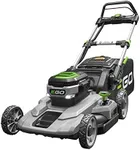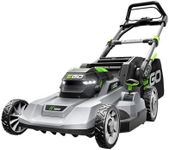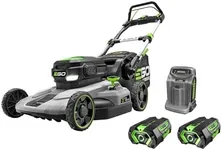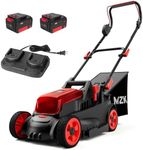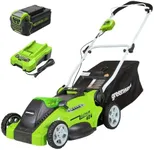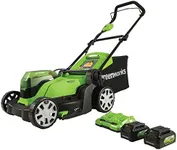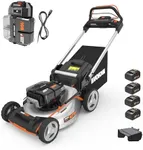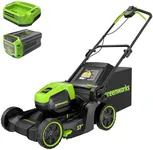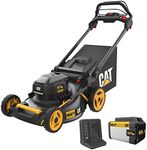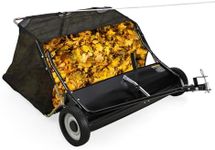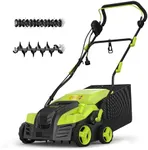Buying Guide for the Best Push Lawn Mowers
Choosing the right push lawn mower can make a significant difference in maintaining your lawn efficiently and effectively. When selecting a push lawn mower, it's important to consider various specifications that will impact its performance, ease of use, and suitability for your specific needs. Understanding these key specs will help you make an informed decision and ensure that you pick the best fit for your lawn care requirements.Cutting WidthCutting width refers to the width of the path that the mower cuts in a single pass. This spec is important because it determines how many passes you'll need to make to mow your lawn. Cutting widths typically range from 14 inches to 21 inches. If you have a small lawn, a narrower cutting width (14-16 inches) will be sufficient and easier to maneuver. For larger lawns, a wider cutting width (18-21 inches) will help you cover more ground quickly and reduce mowing time.
Cutting Height AdjustmentCutting height adjustment allows you to change the height at which the mower cuts the grass. This is important for maintaining the health of your lawn, as different grass types and seasons may require different cutting heights. Cutting height adjustments usually range from 1 to 4 inches. If you want flexibility in maintaining various grass types or adapting to seasonal changes, look for a mower with multiple height settings. For general use, a mower with 3-5 height options should suffice.
Grass Clipping DisposalGrass clipping disposal refers to how the mower handles the grass clippings. There are typically three options: side discharge, mulching, and bagging. Side discharge mowers expel clippings to the side, which is suitable for larger lawns where clippings can decompose naturally. Mulching mowers finely chop the clippings and return them to the lawn, providing nutrients. Bagging mowers collect clippings in a bag for easy disposal, ideal for a clean finish. Choose based on your preference for lawn appearance and maintenance effort.
WeightThe weight of the mower affects how easy it is to push and maneuver. Lighter mowers (under 40 pounds) are easier to handle and are suitable for smaller lawns or users who may have difficulty with heavier equipment. Heavier mowers (over 40 pounds) may offer more stability and durability, making them better for larger lawns or uneven terrain. Consider your physical strength and the size of your lawn when choosing the right weight.
Handle Comfort and AdjustabilityHandle comfort and adjustability are important for ensuring a comfortable mowing experience. Look for mowers with ergonomic handles that reduce strain on your hands and wrists. Adjustable handles can be tailored to your height, making mowing more comfortable and reducing fatigue. If you plan to mow for extended periods or have specific comfort needs, prioritize mowers with these features.
Wheel Size and TypeWheel size and type affect the mower's maneuverability and performance on different terrains. Larger wheels (8-10 inches) provide better stability and ease of movement on uneven or rough terrain. Smaller wheels (6-7 inches) are suitable for flat, smooth lawns. Additionally, look for mowers with durable wheels that can withstand regular use. Choose based on your lawn's terrain and your preference for ease of movement.
Maintenance RequirementsMaintenance requirements refer to the ease of keeping the mower in good working condition. Some mowers require regular blade sharpening, oil changes, and cleaning. Look for mowers with easy-to-access components and straightforward maintenance procedures. If you prefer low-maintenance options, consider mowers with self-sharpening blades or minimal upkeep needs. Your willingness to perform regular maintenance should guide your choice.
